Fixstars recently ran a series of benchmarks that compared Cassandra and GridDB on Microsoft Azure using 1, 8, 16, and 32-node clusters with an equal number of YCSB clients and both in-memory (4M records per node) and out-of-memory (12M records per node) data sets.
As the following graphs show, GridDB’s hybrid storage architecture, in-memory-oriented architecture, outperforms Cassandra both in-memory and in operations required using out-of-memory storage. GridDB accomplishes this while maintaining the same reliability and consistency through twenty-four hours of operation.
The internode communication of GridDB scales significantly better than Cassandra’s decentralized peer-to-peer system, at least up through 32 nodes. GridDB’s performance increases by nearly the same factor as the number of nodes added; Cassandra is only able to scale at 50% of that same factor with this particular Azure instance type.
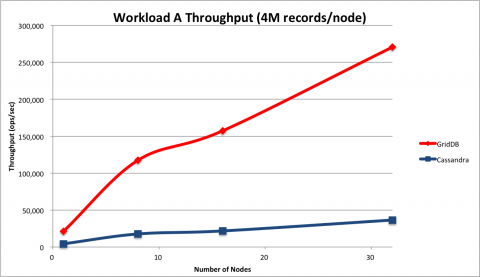
|
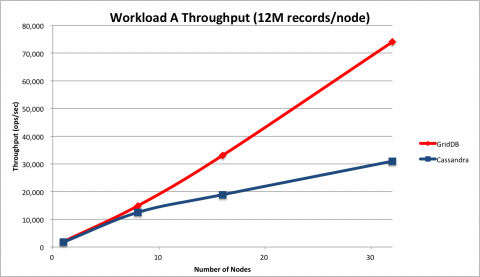
|
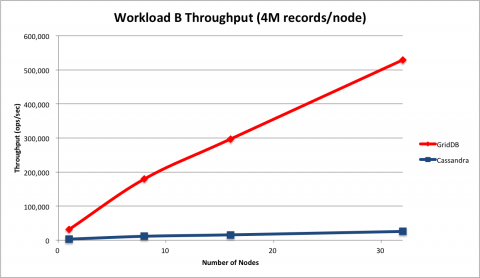
|
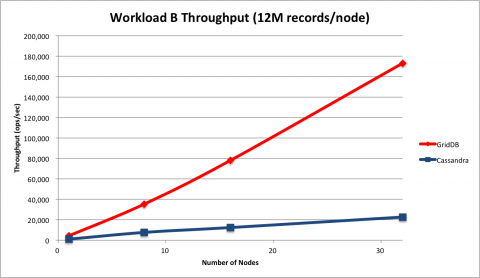
|
In update-intensive workloads such as Workload A, Cassandra’s initial results are quite favorable as its log based architecture allows it to quickly mark a row as deleted and then append the new value to the end of the log. Fixstars noticed that over time Cassandra began to slow down.
Fixstars configured an 8-node cluster and loaded 4M and 12M records per node and set operationcount to 2^32-1 and let the test run for twenty-four hours. In both tests, Cassandra’s throughput is less than 50% of what it was in the twenty fourth hour versus the first. Meanwhile GridDB’s performance was stable when doing both in and out of memory operations.
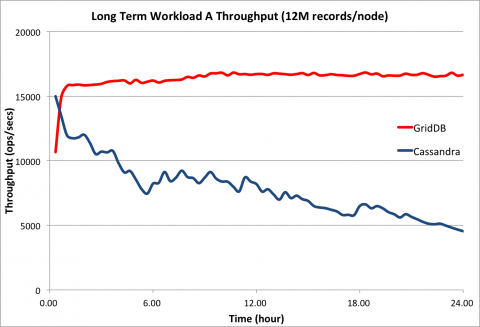
|
More Resources
The full report can be downloaded here:Â https://griddb.net/en/docs/Fixstars_NoSQL_Benchmarks.pdf
The GridDB Community Edition (v3.0.1) can be downloaded from GitHub.
If you have any questions about the blog, please create a Stack Overflow post here https://stackoverflow.com/questions/ask?tags=griddb .
Make sure that you use the “griddb” tag so our engineers can quickly reply to your questions.

What happened to workloads D and E?
Workload D was omitted by mistake, the graph has now been added to the blog post. Workload E is not supported with the current GridDB YCSB client.